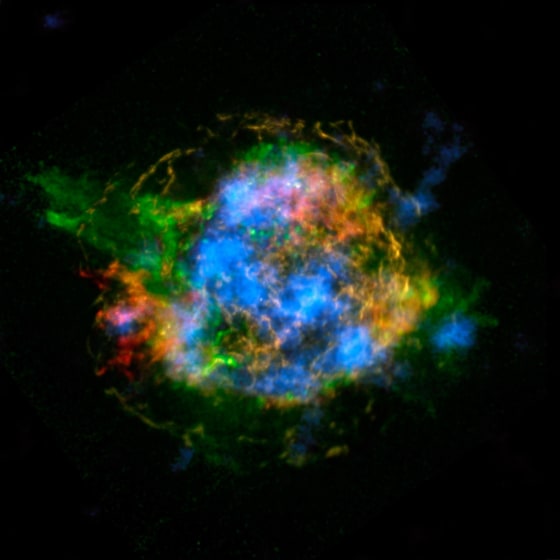How do stars explode? Astronomers hope they’re a step closer to answering one of the universe's enduring mysteries, thanks to first-of-its-kind X-ray mapping by NASA’s NuSTAR telescope of remnants of a supernova.
The space-based telescope mapped out radioactive material in the leftovers of a dead star named Cassiopeia A (Cas A). The resulting images reveal how shock waves likely rip apart massive dying stars.
"Stars are spherical balls of gas, and so you might think that when they end their lives and explode, that explosion would look like a uniform ball expanding out with great power," said Fiona Harrison, the principal investigator of NuSTAR at the California Institute of Technology in Pasadena. "Our new results show how the explosion's heart, or engine, is distorted, possibly because the inner regions literally slosh around before detonating."
Harrison is a co-author of a paper about the results appearing in the Feb. 20 issue of Nature.
You can read more about the results at the NuStar website.
